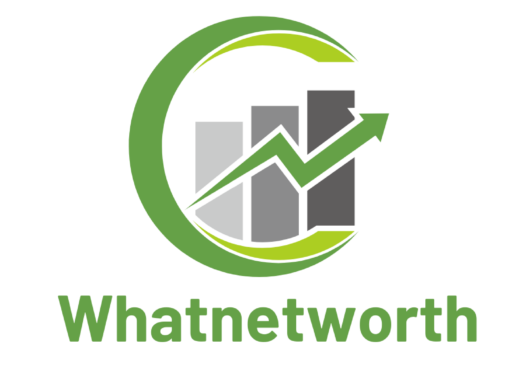Debt is a heavy burden that can impact your financial freedom and emotional well-being. If you are struggling with debt, know that you are not alone, and there are effective strategies to help you pay it off quickly while saving money in the process. This comprehensive guide will walk you through actionable steps to regain control of your finances and achieve debt-free living.
Understand Your Debt Situation
The first step to tackling debt is gaining a clear understanding of your financial situation. Here are some ways to do that:
1. Assess Your Debts
List all your debts, including credit card balances, student loans, car loans, personal loans, and mortgages. For each debt, note the:
- Total balance
- Interest rate
- Minimum monthly payment
2. Calculate Your Income and Expenses
Create a budget to understand how much money you have coming in and where it is going. Categorize your expenses into needs, wants, and savings to identify areas where you can cut back.
3. Determine Your Debt-to-Income Ratio
Your debt-to-income (DTI) ratio is a key indicator of your financial health. Divide your total monthly debt payments by your gross monthly income. A DTI below 36% is ideal, but the lower, the better.
Strategies to Pay Off Debt Quickly
Once you have a clear picture of your debt, it’s time to take action. Below are some proven methods to pay off debt quickly and efficiently:
1. Use the Debt Snowball Method
The debt snowball method focuses on paying off your smallest debts first while making minimum payments on larger ones. This strategy can provide a psychological boost as you eliminate debts one by one.
Steps:
- List your debts from smallest to largest balance.
- Pay as much as possible toward the smallest debt while paying minimums on the rest.
- Once the smallest debt is paid off, roll that payment into the next smallest debt.
2. Try the Debt Avalanche Method
The debt avalanche method prioritizes debts with the highest interest rates, saving you more money in the long run.
Steps:
- List your debts from highest to lowest interest rate.
- Pay as much as possible toward the highest-interest debt while paying minimums on the rest.
- Once the highest-interest debt is paid off, move to the next highest.
3. Consolidate Your Debt
Debt consolidation involves combining multiple debts into a single loan or payment with a lower interest rate. This simplifies repayment and can save you money.
Options:
- Balance transfer credit cards with 0% introductory APR
- Personal loans with low interest rates
- Home equity loans or lines of credit
4. Negotiate Lower Interest Rates
Contact your creditors to negotiate lower interest rates or ask for better repayment terms. Many lenders are willing to work with you if you have a good payment history.
5. Increase Your Income
Boosting your income can accelerate your debt repayment plan. Consider:
- Taking on a side hustle
- Asking for a raise at work
- Selling unused items
6. Use Windfalls Wisely
Unexpected money, such as tax refunds, bonuses, or inheritances, can be used to make significant progress on your debt. Resist the temptation to splurge and put these funds toward your debt instead.
7. Cut Unnecessary Expenses
Identify areas where you can reduce spending, such as dining out, subscription services, or luxury items. Redirect the savings toward your debt payments.
Save Money While Paying Off Debt
Paying off debt doesn’t mean you can’t save money. In fact, saving can provide a financial cushion to prevent future debt. Here are some tips:
1. Build an Emergency Fund
Set aside a small emergency fund of $500 to $1,000 to cover unexpected expenses. This prevents you from relying on credit cards or loans in emergencies.
2. Take Advantage of Discounts and Deals
Use coupons, cashback apps, and loyalty programs to save money on everyday purchases.
3. Avoid New Debt
Focus on living within your means and avoid taking on new debt while repaying existing obligations.
4. Automate Savings
Set up automatic transfers to your savings account. Even small amounts add up over time.
Tools and Resources to Help
Technology can simplify your debt repayment journey. Here are some tools and resources:
1. Budgeting Apps
Apps like Mint, YNAB (You Need a Budget), and PocketGuard help you track your spending and manage your budget.
2. Debt Payoff Calculators
Online calculators can help you determine how long it will take to pay off your debt and how much interest you’ll save by making extra payments.
3. Financial Advisors
Consider consulting a financial advisor for personalized advice and strategies.
Stay Motivated
Paying off debt can be a long journey, but staying motivated is key to success. Here are some tips:
1. Set Milestones and Celebrate Wins
Break your debt repayment goals into smaller milestones and celebrate each achievement.
2. Visualize Your Progress
Create a chart or use an app to track your progress. Seeing your debt decrease over time can be highly motivating.
3. Surround Yourself with Support
Share your goals with friends or join online communities for accountability and encouragement.
Conclusion
Paying off debt quickly and saving money requires discipline, planning, and determination. By understanding your financial situation, adopting effective repayment strategies, and making smart financial choices, you can achieve your goal of being debt-free. Remember, every small step you take brings you closer to financial freedom and peace of mind.
